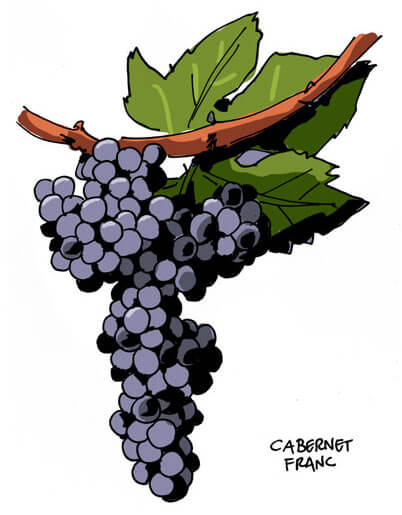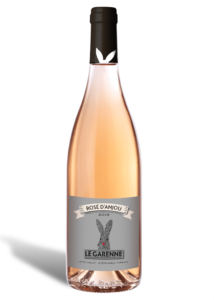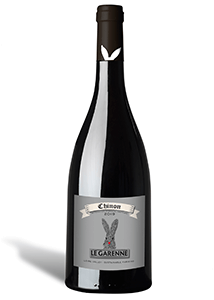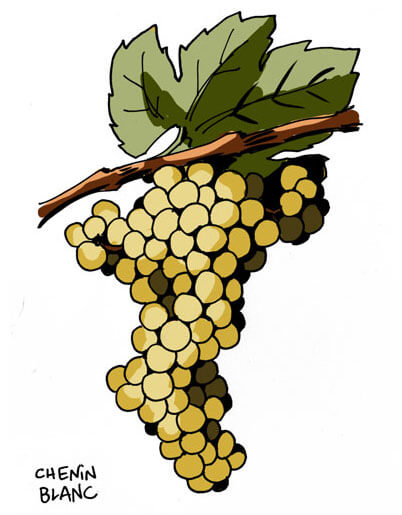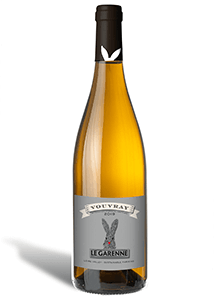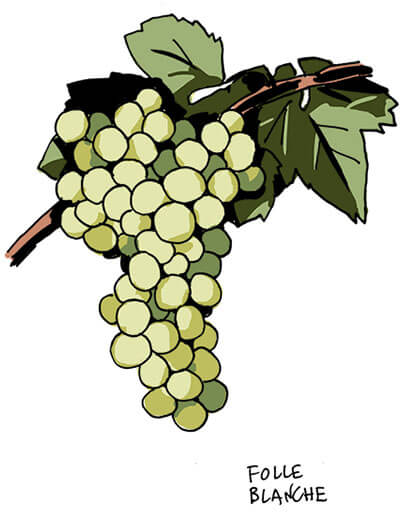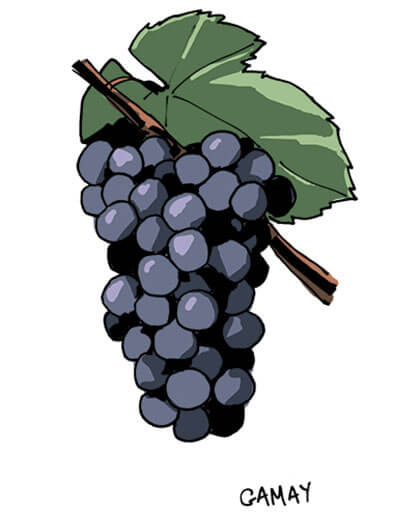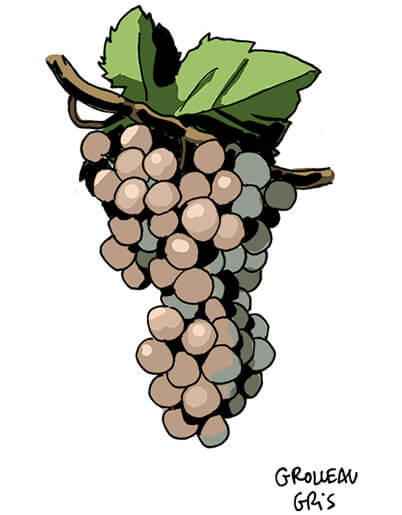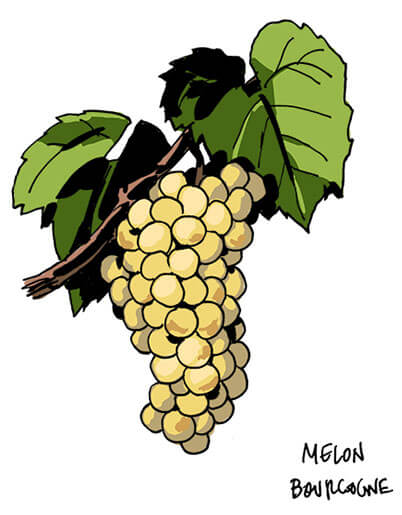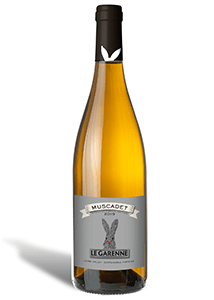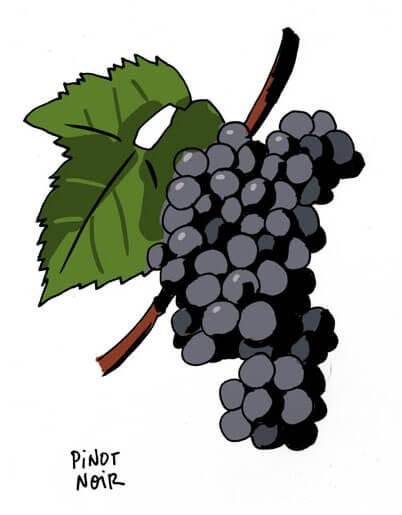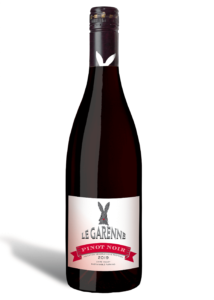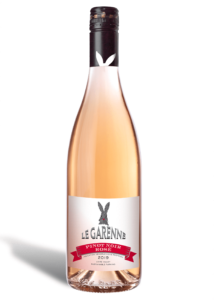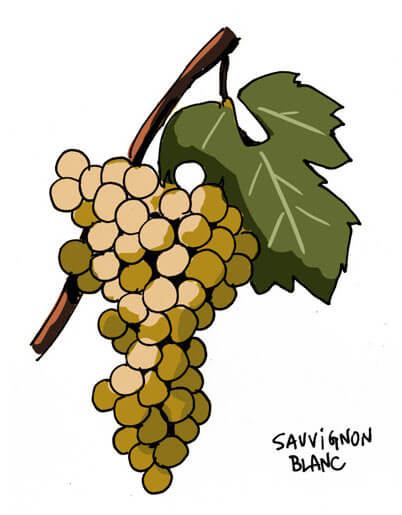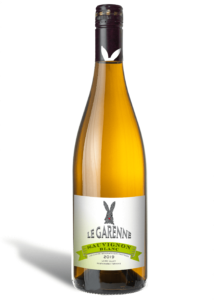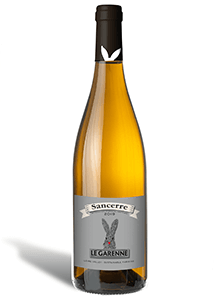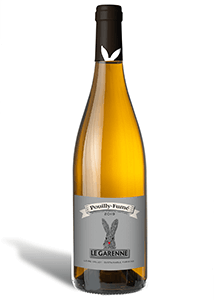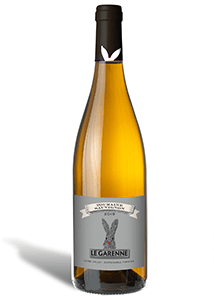Cabernet Franc
Also known as Breton
Native to the Nantes region, but thought to come from the Basque Country in Spain.
It is the Loire region’s chief red varietal that came initially from Bordeaux region and was introduced in Loire Valley in the 11th century. It was called “ Le Breton” after the Breton priest who developed the Bourgueil Abbay vineyard.
Commonly made into a single-varietal wine, Cabernet Franc finds its true expression in the Loire Valley. François Rabelais mentioned it in his work Gargantua and Pantagruel: “I mean of the good Breton wine, not that which grows in Britain, but in the good country of Verron.” Compared to Cabernet Sauvignon, Cabernet Franc shows a smoother and lighter structure, with less tannin’s, which makes it pleasant to drink it even younger. It is characterized by his floral aromas of violet, blackberry or wild strawberry, much more delicate with shades than the blackcurrant, characteristic from the Cabernet Sauvignon.
Chenin Blanc
Also known as Pineau de Loire
Native to The Loire Valley
Around the 10th century, this variety was known as “Plant d’Anjou.” The current name was popularised by Rabelais in the 15th century.
Chenin is the Loire Valley’s iconic grape variety. It is the region’s third most widely grown varietal and expresses the richness of its Loire terroirs to the full. Chenin is a late ripener, adapting well to the various microclimates of Anjou and Touraine to produce a stunning range of wines, from its most dry form with white peach and lime blossom typical fragrances, traditional form with a hint of butter “Brioche” and half-dry wine with tropical fruit flavors to the most iconic late harvest wine characterized by candied fruit, vanilla and honey aromatics.
Gamay
Native to the Burgundy region in the cotes d’Or, and introduced in the Loire Valley in the 19th century in the village of Savenière.
The white-juiced black Gamay grape is particularly widespread in Touraine, where it often makes a single-varietal wine. It prefers siliceous clay and granite soils to limestone, and can give surprisingly good results, especially when blended with Cabernet or Côt.
Grolleau
Also known as Groslot
Native to Touraine
The 1st appear on 1895, mostly used for the rosés vinification or in the blend for the sparkling wines.
Grolleau appeared first in 1895. It gives fruity, semi-dry rosés. After Cabernet Franc and Gamay, it is the most widely grown red varietal in the Loire Valley and a vigorous, resistant grape, accounting for one sixth of the region’s total production. It is mainly used for vinification of rosés or as part of the sparkling wines’ blend.
Melon de Bourgogne
Native to Burgundy (Bourgogne). Introduced by monks in the 17th century.
The crystalline rocks from South East of Nantes give the grapes more finesse than those grown in areas of sedimentary rock. Muscadet is the only wine in the world made from Melon de Bourgogne. It is recognizable by his nice kick in mouth and complex aromas of brioche bread and ripe fruits.
Sauvignon Blanc
Native to Loire Valley “Berry et Nivernais”
Sauvignon is a fairly delicate grape, very sensitive to the prevailing soil and climate. It is one of the more aromatic varietals with many different nuances, all strongly influenced by the terroirs in which it grows.It is recognizable by its green fruits and blackcurrant aromas.
The best wine experience for your Natural lifestyle
Health
- Natural, sustainable wines
- Wild Native Yeast
- Low sulfites
- No additives for color, flavor or texture
- Purity and minerality full expression
Environment
- Family-farm handcrafted
- Benefits to local communities
- Preserve wildlife habitat
- Dry-Farmed
- Minimal environmental impact

